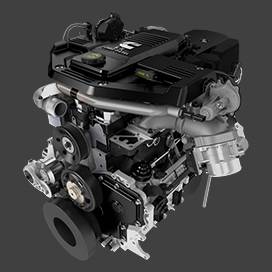Nov . 25, 2024 03:35 Back to list
trailer brake drum assembly
Understanding Trailer Brake Drum Assembly A Comprehensive Overview
In the realm of trailer safety and performance, the brake system is arguably one of the most critical components. Among the various parts that constitute a trailer's braking mechanism, the brake drum assembly plays a pivotal role in ensuring the trailer can come to a safe and effective stop. This article delves into the intricacies of trailer brake drum assemblies, their functionalities, components, and maintenance tips to ensure longevity and reliability.
What is a Trailer Brake Drum Assembly?
A trailer brake drum assembly is an essential part of the braking system, especially in drum brake setups. It consists of a cylindrical drum that houses brake shoes, which are pressed against the drum's inner surface to create friction during braking. This friction allows the trailer to decelerate or halt effectively. The assembly typically includes the brake drum, brake shoes, springs, adjusters, and various hardware components to facilitate its operation.
How Does It Work?
When the driver of the towing vehicle engages the brakes, hydraulic pressure is transmitted through the brake lines to the trailer's brake assembly. This pressure pushes the brake shoes outward against the inner surface of the brake drum. As the brake shoes press against the drum, they create friction, which translates the kinetic energy of the moving trailer into thermal energy, effectively slowing it down. The design of the brake drum allows for even distribution of this force, contributing to a smooth and controlled stopping experience.
Key Components of a Brake Drum Assembly
1. Brake Drum The drum is usually made from cast iron or aluminum and serves as the outer shell that the brake shoes press against. Its design allows for effective heat dissipation, which is crucial during prolonged braking.
2. Brake Shoes These are the friction materials that engage with the drum to create stopping power. As the shoes wear down over time, they need to be replaced to maintain effective braking performance.
3. Springs and Hardware The assembly includes various springs that return the brake shoes to their original position after braking. Other hardware components, such as clips and pins, help hold the assembly together and ensure proper alignment.
4. Adjusters An important feature of the drum brake system, adjusters help maintain the correct distance between the brake shoes and drum, ensuring optimal performance.
Common Issues with Brake Drum Assemblies
trailer brake drum assembly

Several problems can arise with trailer brake drum assemblies, which can compromise safety and performance
- Worn Brake Shoes Over time, brake shoes will wear down due to friction. Regular inspections and timely replacements are essential to maintain braking efficiency. - Overheating Excessive braking can lead to the drum overheating, which may cause warping, reducing braking effectiveness. It’s important to allow the brakes to cool down during heavy use.
- Rust and Corrosion Exposure to moisture and road salt can lead to rust and corrosion of the drum and components, which in turn affects performance
. Regular cleaning and protective coatings can help mitigate this issue.Maintenance Tips
To ensure the longevity and reliability of a trailer brake drum assembly, consider the following maintenance tips
1. Regular Inspections Schedule routine visual checks for wear and tear on the brake shoes, drums, and associated hardware. Look for signs of overheating, such as discoloration or warping.
2. Replace Worn Parts Promptly If any components show signs of excessive wear, particularly the brake shoes, replace them immediately to avoid compromising safety.
3. Keep it Clean Ensure the brake assembly is free from debris, dirt, and rust. Regular cleaning can prevent corrosion and improve performance.
4. Adjust as Necessary Check and adjust the spacing between the brake shoes and drum to maintain optimal performance. Proper adjustment can enhance braking efficiency and prolong the life of the components.
5. Seek Professional Help When in doubt, consult a professional mechanic, especially for complex issues or if you’re not familiar with brake systems.
Conclusion
The trailer brake drum assembly is a vital component that must be well-maintained to ensure safe transport. Regular inspections, timely replacements, and adherence to proper maintenance practices can help in achieving optimal performance. By understanding the workings of this assembly and taking proactive measures, trailer owners can enhance safety and prolong the lifespan of their braking systems. Whether for personal use or commercial transportation, ensuring that your trailer brake system functions flawlessly is paramount to safe towing and road safety.
-
Scania Brake Drums: OEM Quality for Optimal Safety & Durability
NewsAug.16,2025
-
R.V.I: Advanced Remote Visual Inspection for Precision
NewsAug.15,2025
-
Discover HYUNDA: Innovative Vehicles, Equipment & Solutions
NewsAug.14,2025
-
R.V.I: Unlock Advanced Insights & Real-time Performance
NewsAug.13,2025
-
Kamaz Brake Drum: Durable & Reliable for Heavy Duty Trucks
NewsAug.12,2025
-
Heavy Duty Iveco Brake Drum - Premium Quality & Safety
NewsAug.11,2025
